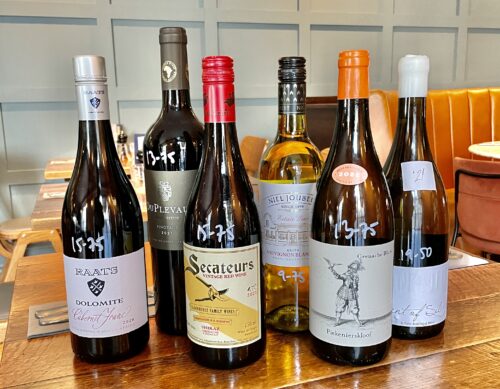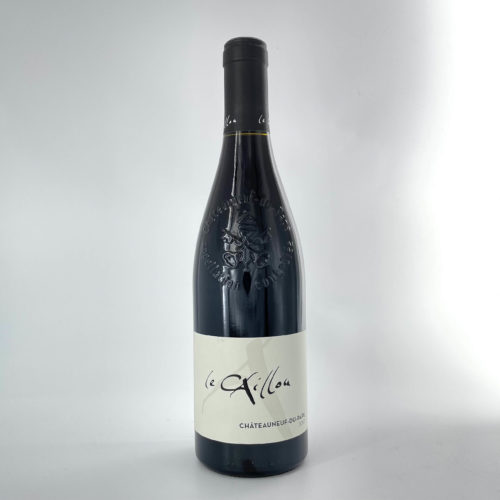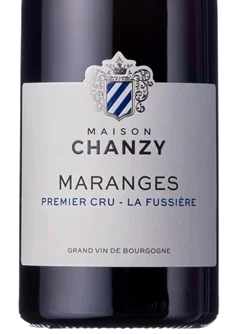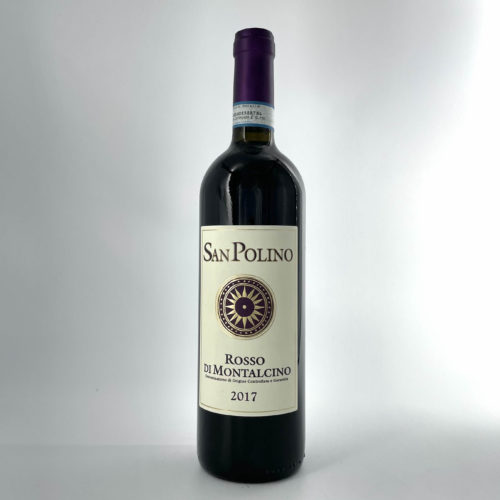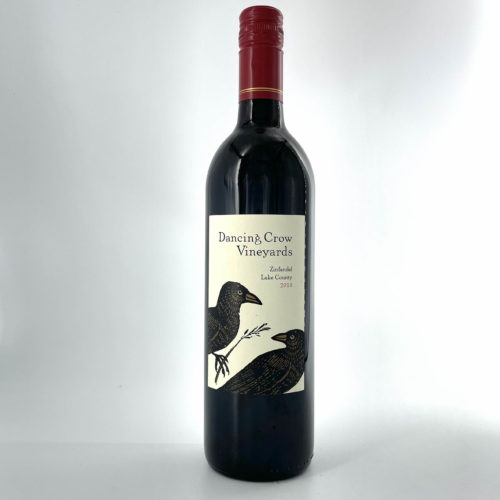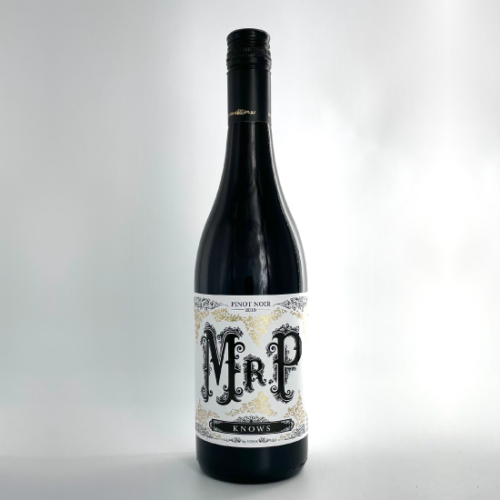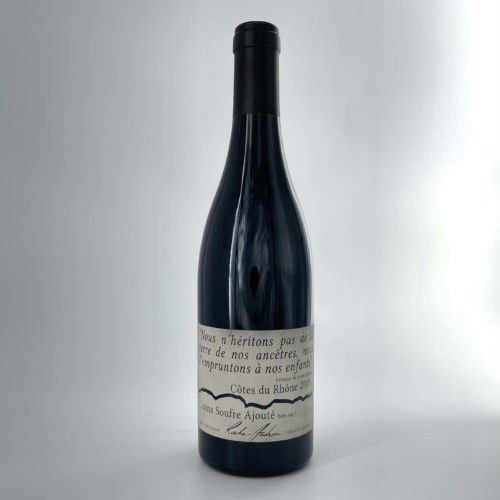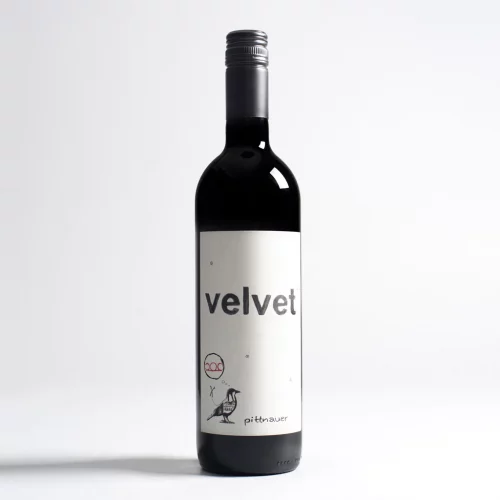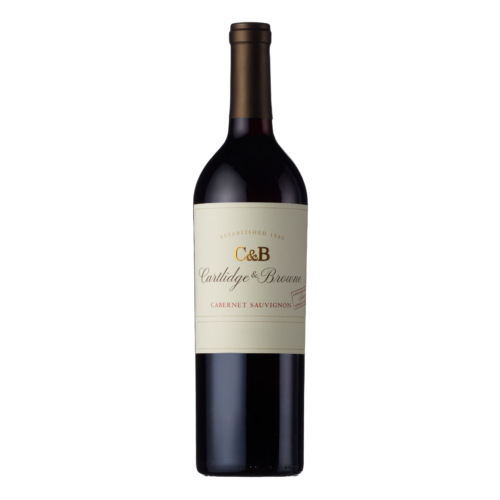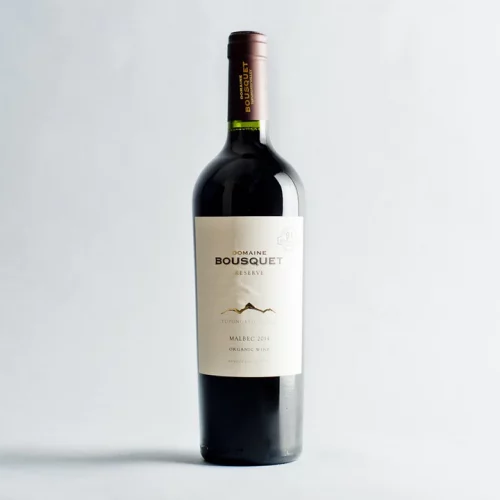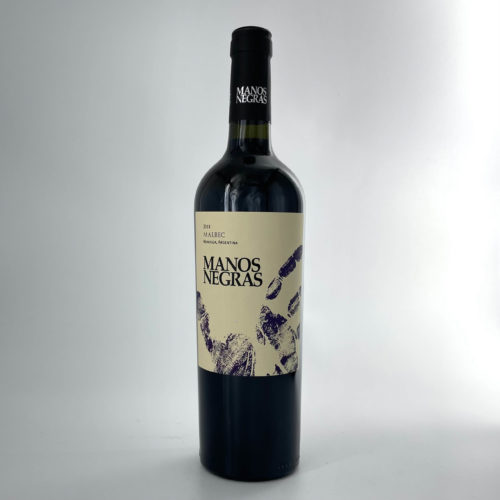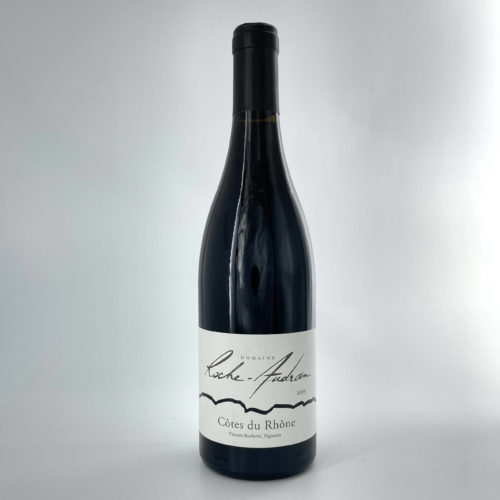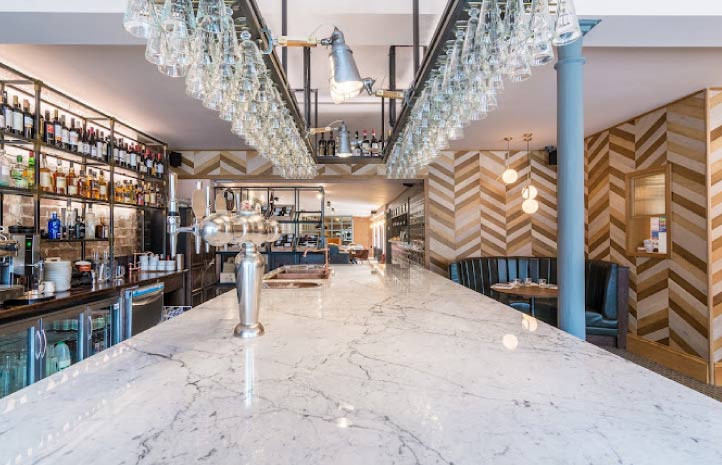South African Mixed Case
A mixed case of 6 South African wines – 3 reds and 3 white
- Sauvignon Blanc ‘Enita’, Niel Joubert, Paarl
- Grenache Blanc, Piekenierskloof, Swartland
- Chenin Blanc ‘Moment of Silence’, Blankbottle, Wellington
- Pinotage, Du Plevaux, Stellenbosch
- Red Secateurs, Badenhorst, Swartland
- Cabernet Franc, Raats, Stellenbosch
Chateauneuf-du-Pape ‘Les Safres’ Caillou, S Rhone, France
The Clos du Caillou was founded in 1895 when Elie Dussaud settled there and created an old cellar. It started as a hunting retreat and it has a remarkable history which explains its exclusion from the Châteauneuf-du-Pape appellation upon its creation in the 1930’s. When government experts arrived at the Clos in 1936 to survey the land for its inclusion in the new appellation, they were met with armed resistance to prevent them entering the property as the secretive owners didn’t want their estate to be analysed. This is the reason for the seemingly inexplicable blank spot in the Châteauneuf-du-Pape appellation map. As a result, the Clos du Caillou is home to some of the most spectacular terroir classified as simply Côtes-du-Rhône. The estate was purchased in the mid-1950s by the Pouzin family who decided to plant vines on the land that had traditionally been designated for hunting. They also acquired a 9 hectare plot within the Châteauneuf-du-Pape appellation itself. In 1995, Sylvie Pouzin took on the estate from her father and began the process of converting the vineyard to biodynamic practices. They gained their official organic certification in 2010 and since then have gone on to grow their reputation for the production of outstandingly well-balanced wines with their signature, soft velvety tannins.
Chanzy, Maranges, 1er Cru La Fussier, Cotes de Beaune, Burgundy, France
Maison Chanzy is a highly respected Burgundian producer, their wines are a classical demonstration of premium vineyard sites in Côte Chalonnaise, Côte de Beaune and Côte de Nuits.
Their range has been carefully engineered by winemaker Max Blondelle, whose primary task is to create wines that eloquently communicate their respective terroir, whilst remaining hands-off in his approach. As such, Chanzy are one of the few Burgundy producers to achieve Haute Valeur Environnementale level 3; the most highly regarded certification for agriculture in France.
Rosso di Montalcino, San Polino, Tuscany, Italy
There is a small ‘nirvana’ northwest of Montalcino, where Luigi Fabbro and Katia Nuassbaum founded San Polino nearly 30 years ago.
Using Luigi’s scientific experience of mapping the Amazon rainforest they decided to try their hands at “creating wines as complete reflections of the biodiversity of their terroir” Katia explains. This tiny estate of only 4 hectares now produces luscious and balanced wines farmed bio-dynamically by this energetic couple who, it is clear, pour all their heart and energies into these sublime wines. Praised by critics and peers they have been described as having “an incredible clarity and pureness of fruit that is unequalled in the region”.
Zinfandel, Dancing Crow Vineyards, Lake County, California, USA
Example of ‘cool-climate’ California – British winemaker – excellent value for money
Owned by Londoner Tony Cartlidge and his wife Sarah, Dancing Crow is an exciting addition to our growing American portfolio. Tony has worked in the Napa Valley since the late 1970s and his latest project sees a return to a more focussed production than his previous projects, as he and his team fashion only a handful of key cuvées.
Pinot Noir, Iona, Mr P, Elgin
At 420m above sea-level, set high above the picturesque Elgin Valley Andrew Gunn founded Iona. It is here overlooking the Atlantic ocean that he has secured some of the coolest vineyards in the Cape.
In a country where cool climate vineyards are like gold dust, these vineyards are veritable nuggets. There is an extremely long growing season, allowing Andrew to create wines with complex flavours and a fresh, elegant style. The approach is hands off and the land is farmed according to organic and biodynamic practices with a particular focus on ensuring the health of the soils whilst pests are kept under control by the resident flock of geese that roam the vineyards.
Mr P, is a “Pinot for the people”, showing all the characteristics of classic, high quality Pinot Noir at an affordable price, making use of younger vines and older barrels with careful and dedicated wine making.
Cotes du Rhone Nature, Domaine Roche-Audran, Southern Rhone, France
Vincent Rochette comes from a long line of grape growers rather than winemakers. In 1998, he bucked that trend by investing in a cellar and the necessary equipment to allow him to vinify his own grapes, which for five generations had been sold to other winemakers in the area. Vincent is an ardent believer in the benefits of biodynamics, fully converting his estate to follow that philosophy in 2006. He uses only natural products in the vineyard and carries out all his work in keeping with the cosmic cycles of the earth, not only among the vines but also in the cellar
Velvet, Pittnauer, Burgenland, Austria
Gerhard Pittnauer is undoubtedly one of the stars of the Austrian winemaking scene, producing a host of powerful reds which showcase the quality of Austria’s indigenous grape varieties. His base in the town of Gols is located in the Burgenland region, famed for the amount of sunlight it receives each year. As a result, Gerhard is able to fashion supple, modern wines that all display his signature, silky soft tannins.
Cabernet Sauvignon, Cartlidge & Browne, North Coast USA
In 1980, the same year Ronald Reagan came to power and JR was shot in ‘Dallas’, with no money to buy vineyards and seeing no reason to, Tony Cartlidge started his winery in an undistinguished Napa Valley garage.
Possibly the original Californian ‘garagiste’ he set out to source the best possible grapes to handcraft his wines in this unassuming home. Nearly 40 years later, still sourcing from vineyards as wide ranging as Sonoma to the Sierra foothills, continuing to produce high quality wines, Cartlidge & Browne has become a byword for varietally pure Californian wines, whilst sticking to their garagiste roots of taking a different path.
Malbec Reserve, Domaine Bousquet, Mendoza, Argentina
The Bousquet family hail from the city of Carcassonne, in the South of France and are 4th generation winemakers. In 1990, they began to explore the idea of leaving behind their vineyard in France to travel and explore opportunities further afield. On one particular trip to Argentina, they fell in love with Mendoza, intrigued by combination of soil variation, altitude and terroir on offer.
In 1997, they took the decision to permanently relocate, buying a parcel of land in the Gualtallary Valley in Tupungato, in the foothills of the Andes. The site is defined by its altitude, with the majority of the vines at around 1,200 metres!
The key objective of the Bousquet family was to unite their tradition of European wine with these unique conditions and produce wines that speak of their terroirs.
Malbec Manos Negras, Uco Valley, Mendoza, Argentina
Alejandro Sejanovich is arguably Argentina’s most knowledgeable viticulturist, working as vineyard director for Bodega Catena Zapata for 16 years, he pioneered high altitude vineyard planting and conducted ground breaking research on Mendoza Malbec clones.
Manos Negras focuses on latitude winemaking, planting Torrontes in the northern stretches of Cadayate in Salta, Pinot Noir in the southern-most region of Neuquen in Patagonia and cultivates 50 year old Malbec vines in the prized Altamira appellation in the Uco Valley.
Cotes du Rhone, Domaine Roche-Audran, Southern Rhone, France
Vincent Rochette comes from a long line of grape growers rather than winemakers. In 1998, he bucked that trend by investing in a cellar and the necessary equipment to allow him to vinify his own grapes, which for five generations had been sold to other winemakers in the area. Vincent is an ardent believer in the benefits of biodynamics, fully converting his estate to follow that philosophy in 2006. He uses only natural products in the vineyard and carries out all his work in keeping with the cosmic cycles of the earth, not only among the vines but also in the cellar

